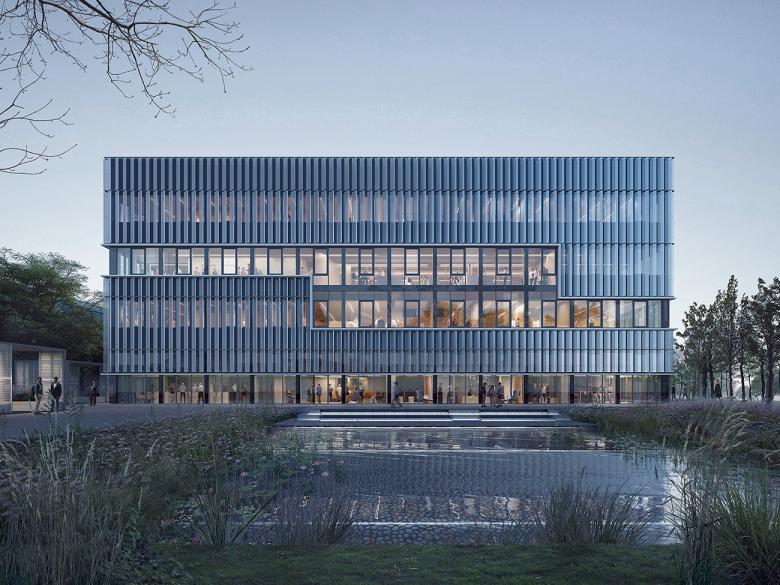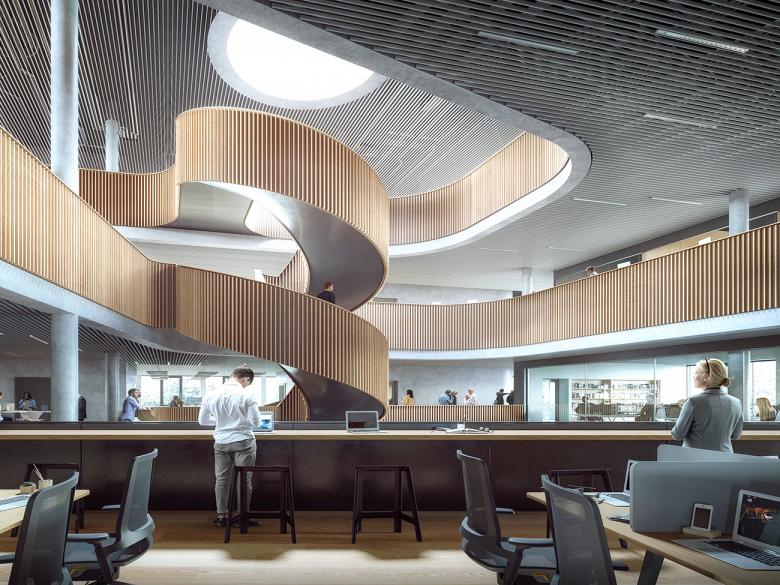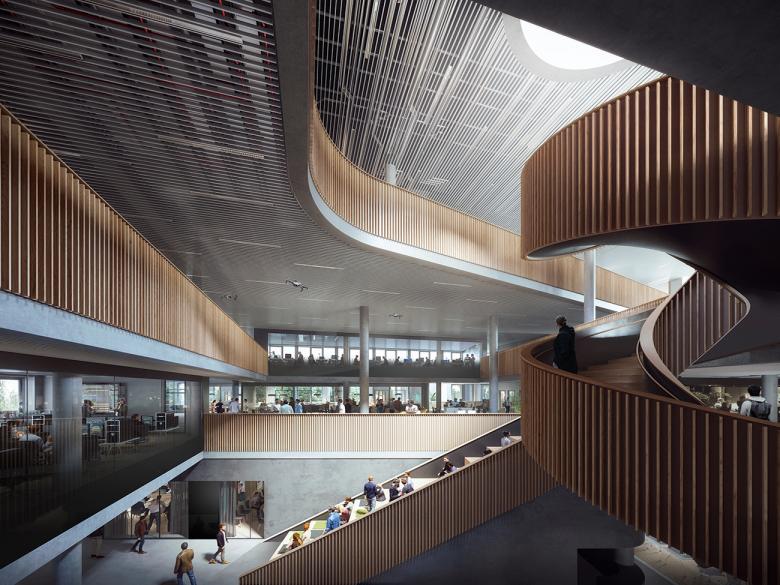Fraunhofer-Institut für Kognitive Systeme IKS
Garching bei München, Germany
A house for the development of secure artificial intelligence as a radiant building block for the "innovation hotbed" Fraunhofer-Gesellschaft.
As a research location with 12,000 students and 6,000 researchers and employees, Garching has been a fixture in the German and international science and university landscape for decades. The campus of the Technical University of Munich (TUM), which is also home to numerous buildings of well-known research organizations (Fraunhofer Society, Max Planck Society, Leibniz Association, European Southern Observatory, etc.), is located to the north of the Bavarian capital Munich as well as the actual municipality. The campus is bordered by Lichtenbergstraße in the north and Ludwig-Prantl-Straße in the south, as well as by the green Isar River in the east - as a natural boundary - and Freisinger Landstraße in the west. The Isar, the campus magistrale Boltzmannstraße and the green ribbon of the Wiesäckerbach divide the science location, whose development takes place(e) from east to west from the river and continues with further potential and expansion areas up to the Freisinger Landstraße. In this expansion area, along the first hundred meters of Lichtenbergstrasse, the institutes IGCV and AISEC of the Fraunhofer-Gesellschaft form the prelude to the northern part of the Garching Research Center.
Between these two institutes, the Fraunhofer Institute for Cognitive Systems IKS will position itself as a hinge and transition to the adjacent building complex of the TUM Faculty of Electrical Engineering and Information Technology to the south. A central urban element of the Fraunhofer Institutes is the Anger (a widened, elongated open space), to which all buildings face and via which they are accessed. Due to the location of the building site at the southeast corner of the Anger, the IKS opens its entrance to the north, which on the one hand creates a clear address formation and on the other hand allows an optimal utilization of the light conditions for the floor plan design. The approximately 2,000 m² building plot takes up the lines and edges of the IGCV and AISEC institutes to create space and closes off the Fraunhofer site at its southeastern end in terms of urban development. This makes it a central structure and a powerful building block in the overall context of the area south of Lichtenbergstrasse.
- Architects
- Telluride Architektur
- Year
- 2024 –







